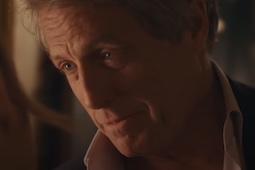
78 years ago, the best Christmas movie of all time (arguably) had its American premiere. It's a Wonderful Life was the third collaboration between director Frank Capra and actor James Stewart, and fashioned one of the most powerful redemption stories ever seen in Hollywood.
The movie premiered at New York's Globe Theatre on 20th December 1946, to an initially frosty critical reception and lukewarm box office returns. However, the movie's reputation started to grow in the ensuing decades, particularly during American cable TV re-runs throughout the 1970s (during which time it experienced a controversial colourization).
Republic Pictures, who owned the film’s copyright, had such little faith in it that they failed to renew the rights for a second term in 1974, allowing channels to share it for free. From there, the movie was steadily taken to the hearts of millions of people around the world.
We're showing the movie at Cineworld as part of our Christmas Movie Season, meaning you can enjoy this Yuletide masterpiece for just £5 (plus a 95p online booking fee).
Before you book your tickets, here are the reasons why It's a Wonderful Life remains the definitive festive masterpiece.
1. James Stewart's performance
Before filming It's a Wonderful Life, James Stewart had served in World War II, serving in the Army Air Corps. Capra, meanwhile, made propaganda films while serving in the U.S. Army Signal Corps. The subsequent disillusionment felt by both men was to underscore the movie.
Stewart had collaborated with Capra on the films You Can't Take It With You (1938) and Mr. Smith Goes To Washington (1939). Both films had been made pre-WWII, and were more readily, overtly optimistic in their tone. It's a Wonderful Life, meanwhile, carries the sense that hope is always ready to be tempered with a crushing sense of reality, which makes the texture of the film richer, more complex and more emotionally engrossing.
Stewart's subtly calibrated performance is the centerpiece of the drama. The story takes us on a whistlestop tour throughout the life of his character George Bailey, an affable small-town businessman who is contemplating suicide.
An intervention from the stars up above eventually makes George realise the magnitude of his unremarkable existence, culminating in a Christmas finale that is tear-jerkingly moving. But before we get there, the dots are filled in as to George's background.
Stewart is magnificent at taking us from the wide-eyed, aspiring young traveller to the increasingly jaded, reluctant businessman who has to take over the family loan company after his father's death. The presence of sneering tycoon Mr. Potter (a memorable Lionel Barrymore) also serves to drive George further to the brink.
It's all in Stewart's eyes: we can see the light going out of them across the course of the movie, his shoulders steadily becoming more hunched and that characteristic drawl becoming ever-more cracked. A sudden moment of prayer in a busy bar is devastating in showing us how the otherwise homely, kindly facade is beginning to crack.
George's crying wasn't scripted – it all came from Stewart, his post-World War II anguish bubbling over to lend raw authenticity. He later explained: "As I said those words, I felt the loneliness, the hopelessness of people who had nowhere to turn, and my eyes filled with tears. I broke down sobbing. That was not planned at all.”
Yet as part of the film's intermingling of light and shade, Stewart's performance also hits joyous notes. Early on, during his courtship of eventual wife Mary (Donna Reed), Stewart charms the pants off us during the school dance sequence and the dreamily romantic "lasso the moon" exchange.
Even now, George Bailey remains one of the most resonant and believable characters from any movie, precisely because his troubles are mirrored in the lives of people the world over. It was a role that forever cemented Stewart as the everyman, one whose screen persona could resonate with audiences like few others. (In recent years, Tom Hanks has been seen to take up the mantle).
2. Its depiction of Bedford Falls
Is there a more quintessential Christmas location than George Bailey's hometown? As was standard for the time, Bedford Falls was built entirely on a soundstage, specifically the RKO Radio Pictures Studio in Culver City, California. Amusingly, the movie shot during the summer of 1946, from April through to July, and Stewart can be seen visibly sweating during several sequences.
Capra derived inspiration for Bedford Falls from the Norman Rockwell-esque Seneca Falls in upstate New York, and by shooting it on a stage, he had complete control over the environment (an approach also favoured by Alfred Hitchcock).
The authentic community spirit in It's a Wonderful Life, aided by the superb supporting cast, stems almost entirely from the superb set design, and by investing us in the location's apparent realism, Capra makes the eventual Yuletide payoff all the more convincing.
Throughout the movie, characters drift in and out so realistically that one genuinely believes this is a community capable of rallying around one desperate man. From the Bailey bank to the renovated Bailey home, Potter's office (with its deliberately low-placed chairs) to the famous bridge during the climax, Bedford Falls resonates as a real place.
Little wonder: the site covered four acres, sported several real oak trees and was populated with animals that were allowed to roam at their leisure, enhancing the set's believability.
It's a Wonderful Life also broke new ground in its depiction of Christmas snow. Whereas before Hollywood movies used crushed cornflakes painted white, Capra developed a system of 'chemical snow'. This involved a mixture of water, soap flakes and foamite, which again added to the film's verisimilitude.
3. It recognises that triumphs are hard-fought ones
Author Charles Dickens is said to have defined the modern Christmas image with his novella A Christmas Carol. But, as anyone who's read it will know, the story dwells largely in horror, despair and regret, only emerging into festive redemption during the final pages, as Victorian miser Ebeneezer Scrooge changes his ways forever.
It's a Wonderful Life is very much part of this rich Dickensian tradition. The movie earns its cathartic Christmas climax by observing life's series of petty cruelties and injustices, which seem to be heaped on George when he least needs them. When things reach a critical mass, George almost throws away the most important gift of all: his existence.
There are obvious parallels with A Christmas Carol, here. Scrooge is escorted by three ghosts through the past, present and future, which show the genesis of his corruption, the state of things as they are, and the state of things as they will be should he not change. In the process, Scrooge reconnects with the spirit of Christmas and those around him, including his family and his loyal worker Bob Cratchit.
In It's a Wonderful Life, George is reminded that the seemingly mundane tapestry of his existence conceals gems. The power of the movie comes as they're picked out: from the loving relationship with his parents and brother Harry (Todd Karns), to his eventual marriage to Mary and the children they sire together, George has a lot to be thankful for. It just takes a series of seemingly impassable roadblocks to draw this revelation out into the open.
This isn't a Christmas movie that favours materialism or toys (admittedly, that was more of an eighties and nineties trend). Rather, it's one where the fundamental compassion and spirit of the season is borne out through the eyes of the central character.
4. The delightful character of Clarence
What's Christmas, or a Christmas movie, without an angel? They don't come more charming than Clarence Oddbody, the "second-class" angel who is dispatched from Heaven to show George the sum total of his life.
Despite his advancing years, actor Henry Travers invests Clarence with an endearing sense of childlike energy and bemusement. Because he's second-class, he hasn't earned his wings yet, which allows for much wry humour as George is seemingly faced with little more than a strange old man. ("You look about the kind of angel I'd get," gripes George.)
However, the bond between the two men darkens and intensifies as Clarence shows George what would have happened had he not existed. The relationship between the celestial being and the downtrodden businessman encapsulates the film's complex atmosphere, mixing sweetness and pragmatic darkness in one.
Travers retired in 1949 and would forever be associated with the role of George's guardian angel, who leaves behind a Christmas tree bell to show that his mission has been accomplished.
5. Its everlasting message of redemption
"No man is a failure who has friends." So reads Clarence's final message to George after the latter is reunited with his family, now re-invested with a zest for life and appreciation for all he has accomplished.
Has there been a more powerful message in film history? It's a Wonderful Life encourages us to take stock from human interaction, basic decency and kindness, and the delivery of said message is well-earned.
It can't be accused of being maudlin or schmaltzy, as George has only divined this basic human lesson after much hardship and despondency. The relative darkness of the preceding sequences makes the end of the movie sincere, not sentimental, the joy of the present amplified by the thoughts of everything that has gone before.
It's a truly universal movie, perhaps the most universal movie that's ever been made. It's a stirring reminder that fostering relationships, friendships and bonds has the potential of paying dividends, the delighted faces of the Bedford Falls community reflecting the Yuletide spirit.
Just several words from George's brother Harry are enough to bring us to tears: "To my big brother George... the richest man in town." Only the richness this time stems not from avariciousness or material wealth but the simple respect and love George has quietly commanded from those around him. Stewart's overwhelmed expression, and the fine support from Donna Reed and others, strike a note that is both humbling and inspirational.
Need we say more about why it's the greatest Christmas movie of all time?
Will you be watching It's a Wonderful Life this Christmas? The movie will be re-released at Cineworld cinemas on December 9th, so book your tickets via the link below.











.jpg)
.png)






